While in a craft store looking for storage items, I came upon this:
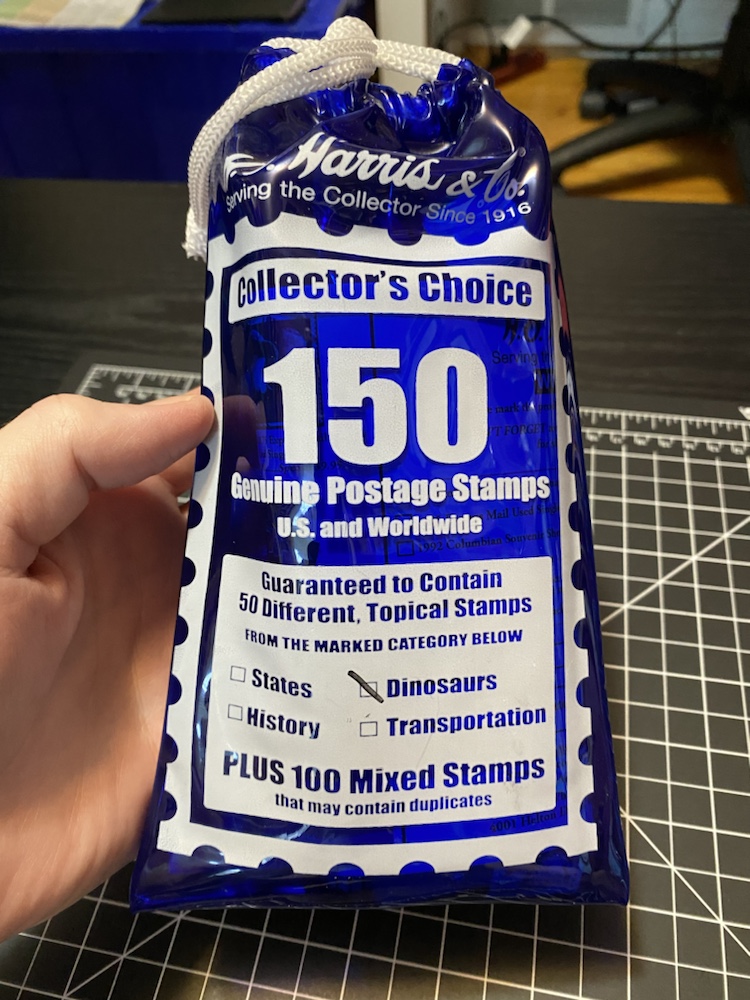
150 stamps, 50 of which were guaranteed to be different dinosaur stamps! It was only $8 and I couldn’t resist the dino-temptation so it quickly became mine.

A quick comment on the packaging before I open it. It’s a plastic bag, drawstringed closed and heat-treated to stay closed. A most unusual way to sell stamps I though, and hardly tamper proof. It gave the whole package a distinct air of amateurism… but it was only $8 🙂
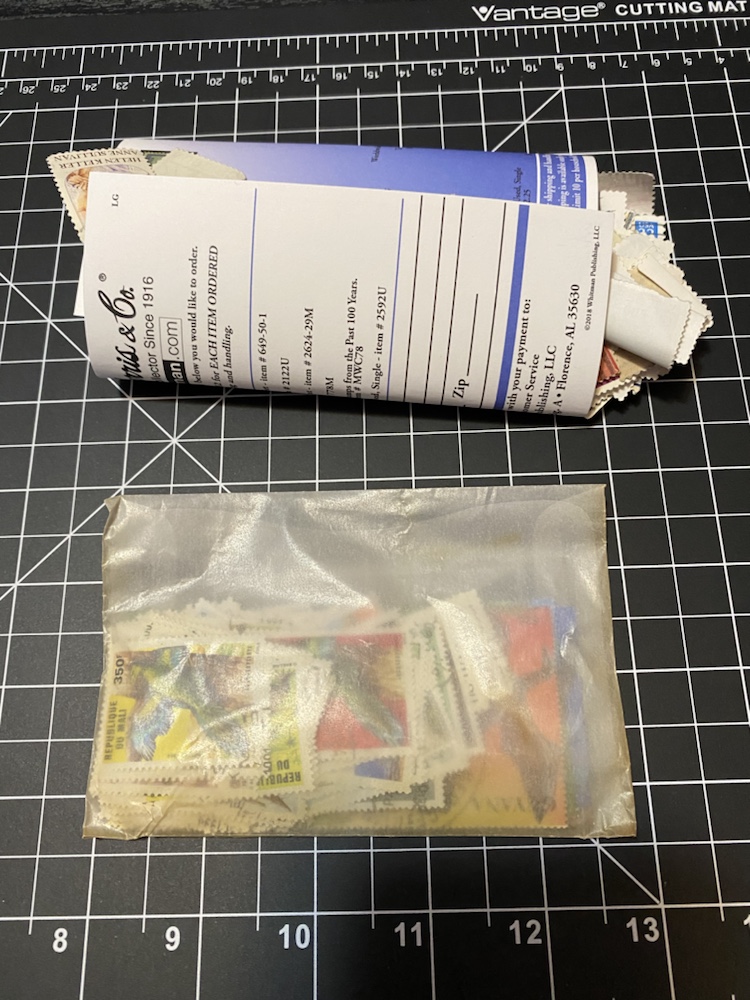
Here’s the contents: a yellowing envelope full of dinosaur stamps, and a jumble of other stamps folded up in a thin cardboard flyer advertising other products by the same company. Putting aside the dinovelope, I started by examining the ‘mixed’ stamps.
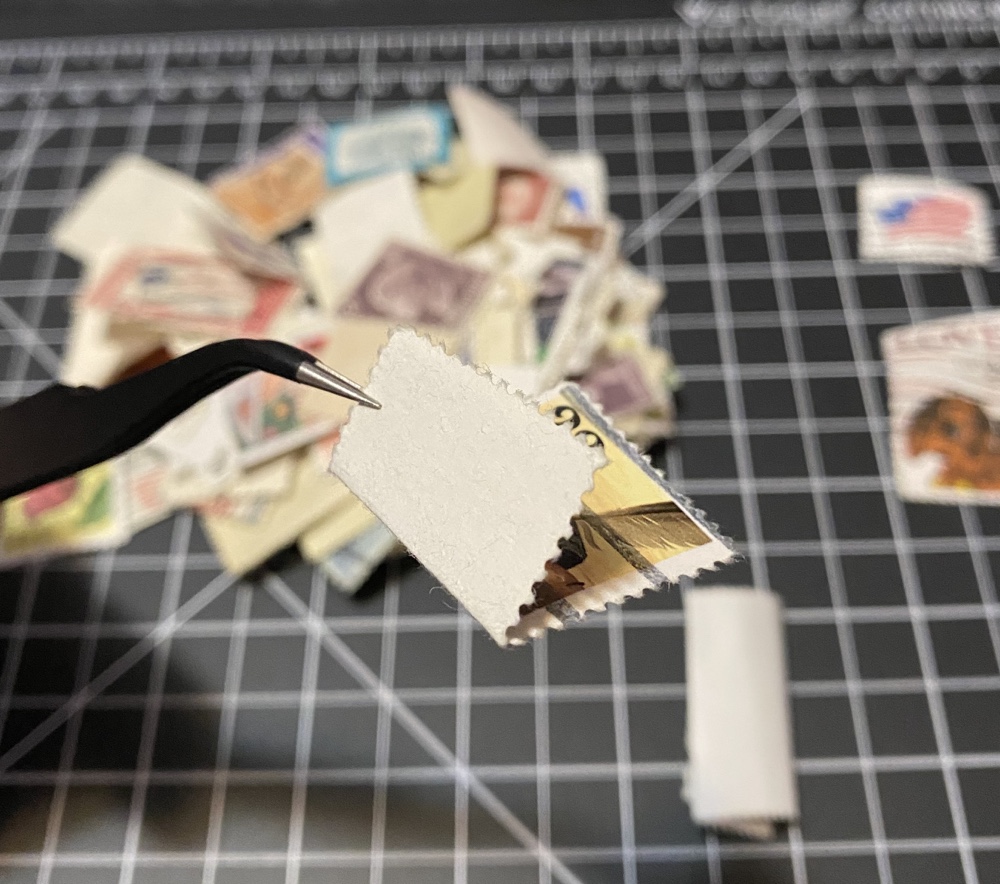
As can be seen here, every expense was spared keeping the stamps in pristine condition, and quite a few were folded like this one. I started separating them and sorting them.
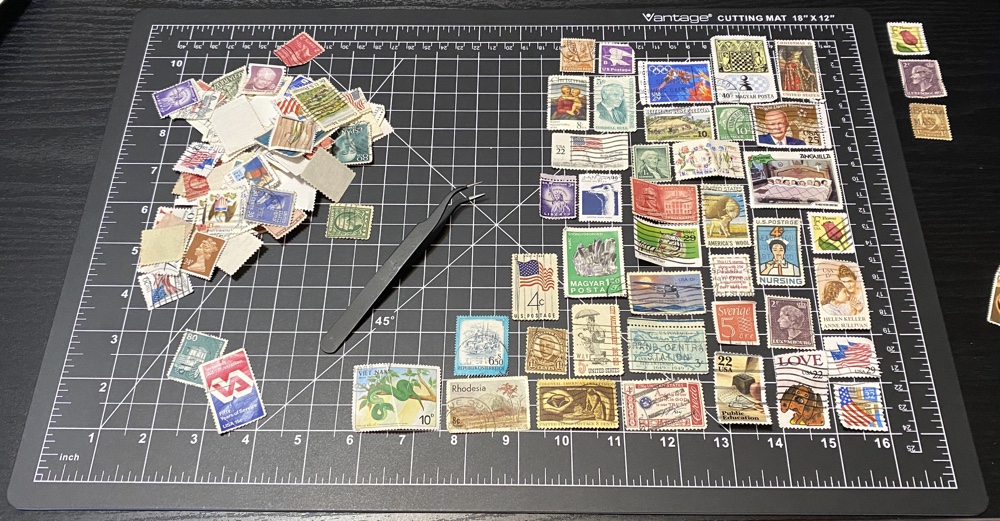
As you saw the packaging says (in small print at the bottom) that some of the 100 ‘mixed’ stamps may be duplicates, and in truth I expected most of them to be. I was quite surprised as I sorted them all to find the number of duplicates to be small. I was also happy to see a lot of international stamps, and became quite distracted as I sorted, closely examining each stamp as I picked it out of the pile.
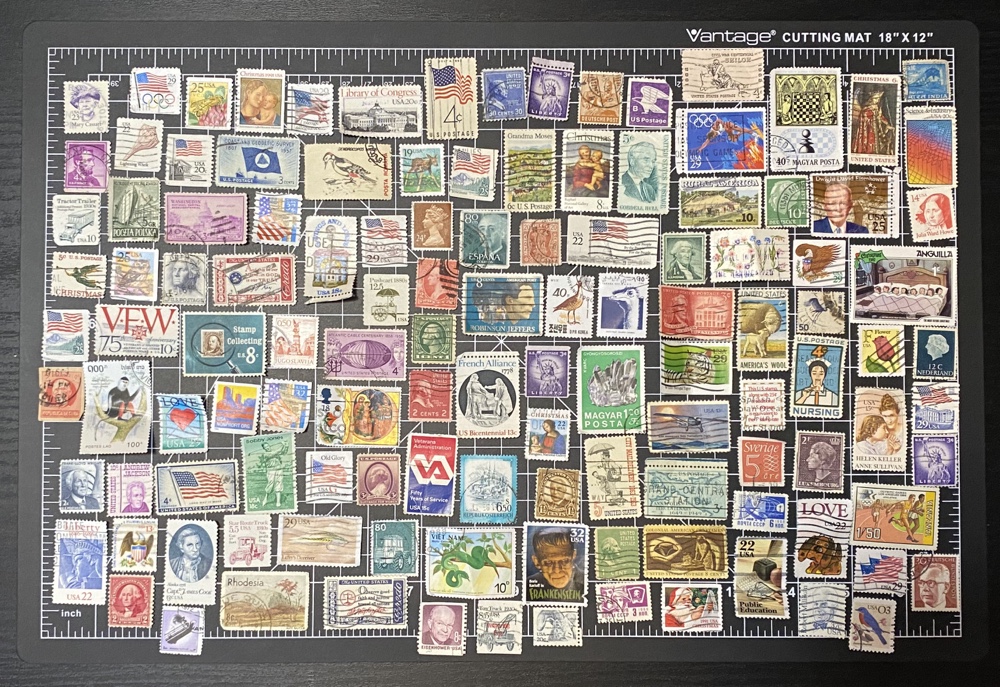
There’s all the ‘mixed’ stamps! In total, there are 121 unique stamps, and a further 29 doubles (of 18 stamps). So for starters the package contained not 100, but 150 stamps! (Can you see the doubles I missed in the above photo?)
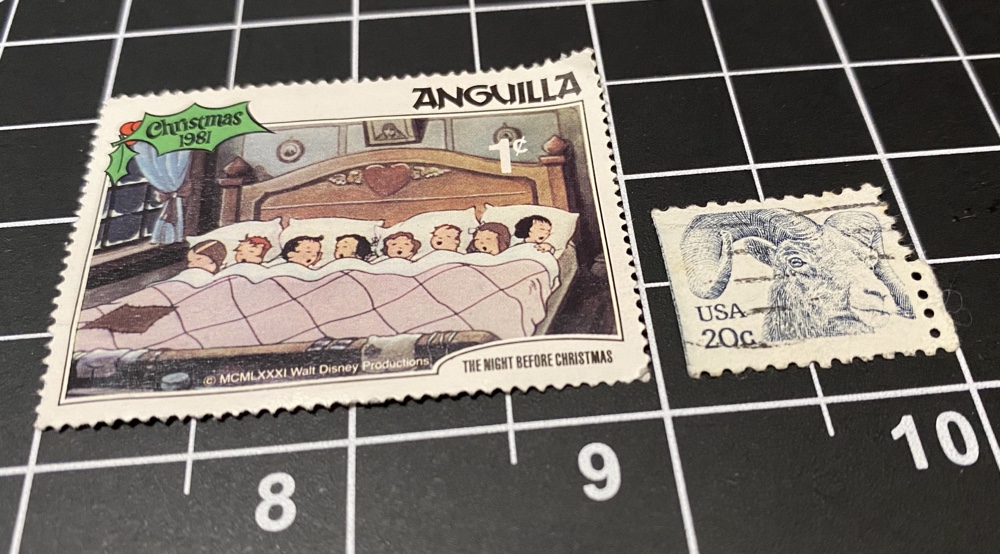
Those are the largest and smallest stamps, with the Anguilla one being about 2 by 1.5 inches. I’m not sure this is remotely important, but I always note stamp size since I’m always thinking about sticking them on postcards 🙂
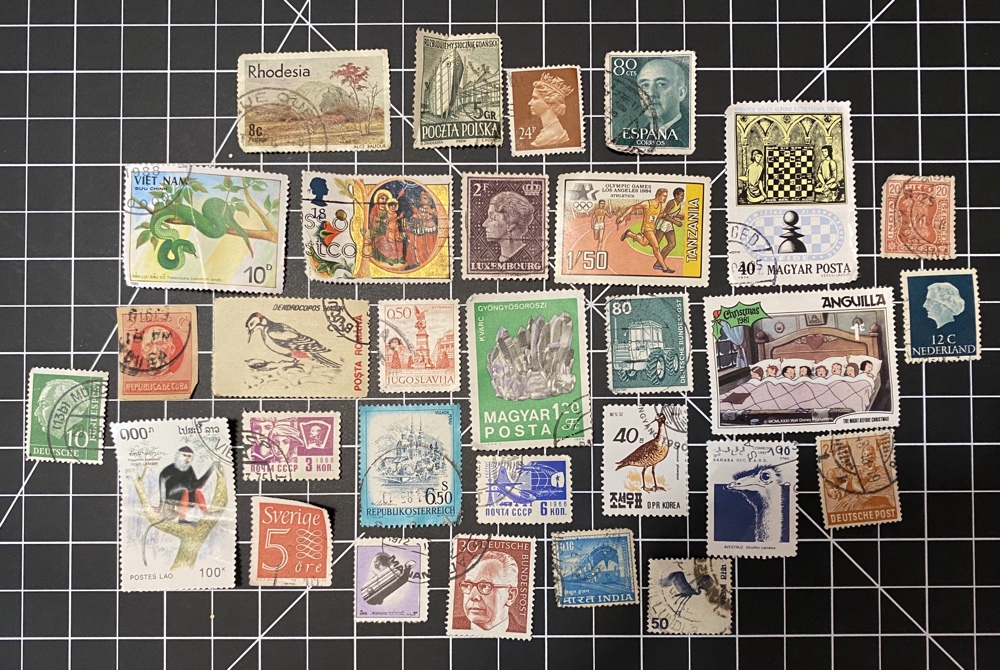
Here I have separated out all the international stamps. There’s 30 in total with no duplicates, from the following 22 countries: Cuba, Sweden, Vietnam, Yugoslavia, Romania, Poland, Luxembourg, Spain, The Netherlands, England, India, Hungary, Germany, North Korea, Austria, Russia, Tanzania, Anguilla, Laos, Rhodesia, Western Sahara and Manama.
A few of these raised an eyebrow, so I did some research and learned a few interesting facts!
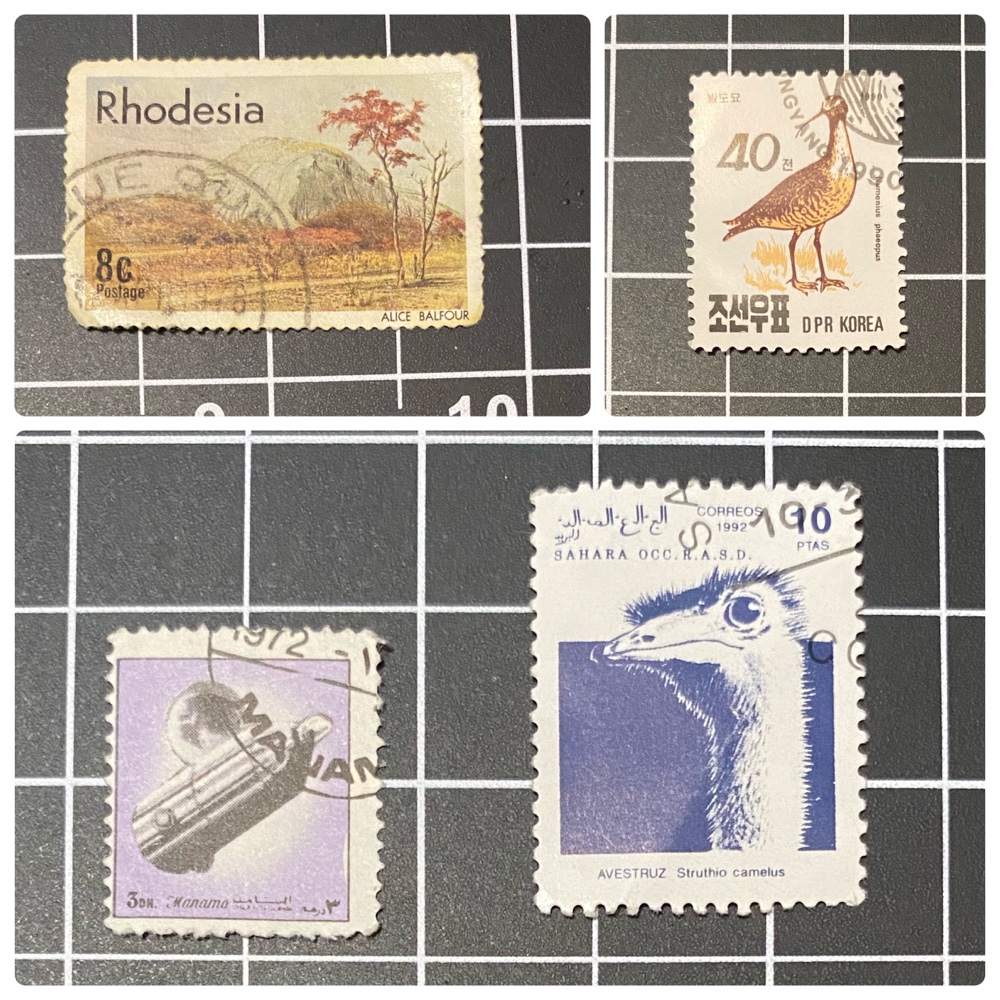
Rhodesia, as you know, is no longer a country. So that’s a stamp (and in fact my only stamp from a no-longer-extant country. It’s in wretched condition, but it’s over 50 years old as well.
The DPRK stamp is from North Korea. This may seem unusual but North Korea issues an extraordinary amount of stamps: more even than South Korea! The stamps are mostly propaganda (including some infamous ones depicting war with the USA) but there are a lot of animal and topical stamps as well. The main reason is to make money selling them to stamp collectors.
The Manama and Western Sahara stamps are what are called ‘Cinderella’ stamps, which are those issued by non-postal authorities. Manama is part of UAE today, but in the 60s was little more than a desert oasis that issued ‘stamps’ to sell to collectors despite not even having a postal service. Western Sahara is the same, although they have some more claim to sovereignty since they are a disputed region of Morocco. But still, their stamps are not usable for postage. (The North Korea and Anguilla stamps are arguably Cinderellas as well.)
The things you learn from stamps!
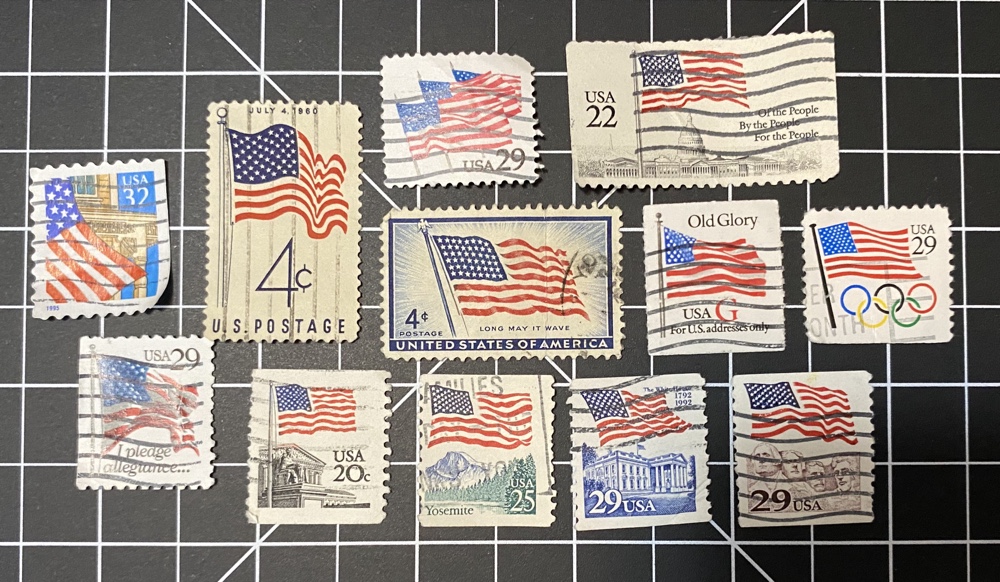
The most common ‘theme’ was unsurprisingly US flags, since the USA always has one in circulation. I like the series at the bottom, which showcase famous sights with the flag. The 4c in the middle is very pretty!
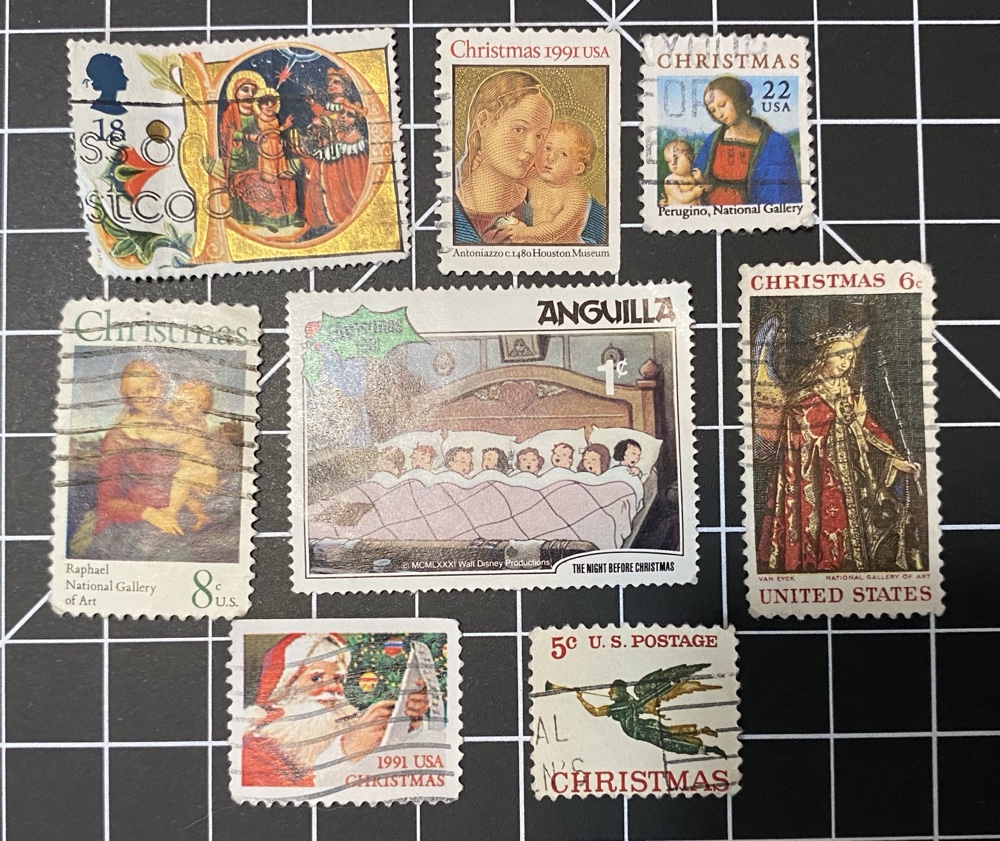
Flags aside Christmas stamps were common, with eight in total from 3 countries. The UK one – though folded and damaged – was printed with flashy gold ink and is very pretty.
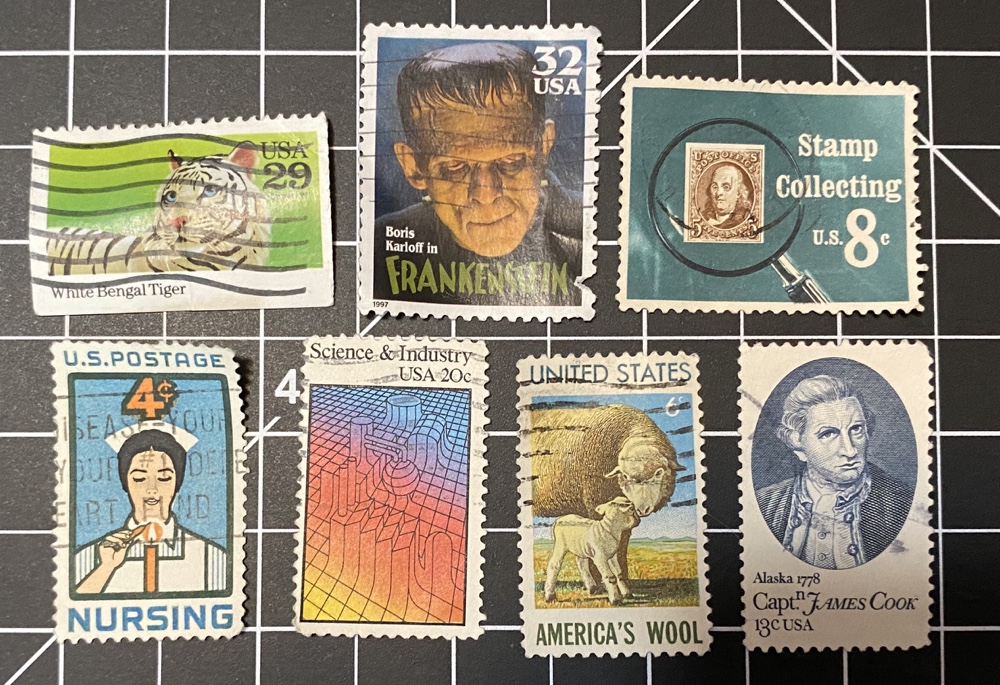
America issues a lot of attractive stamps today, but looking at this group it’s clearly been the case for a long time. The wireframe science stamp is a favourite, and I’d love to put those Frankenstein stamps on some postcards!
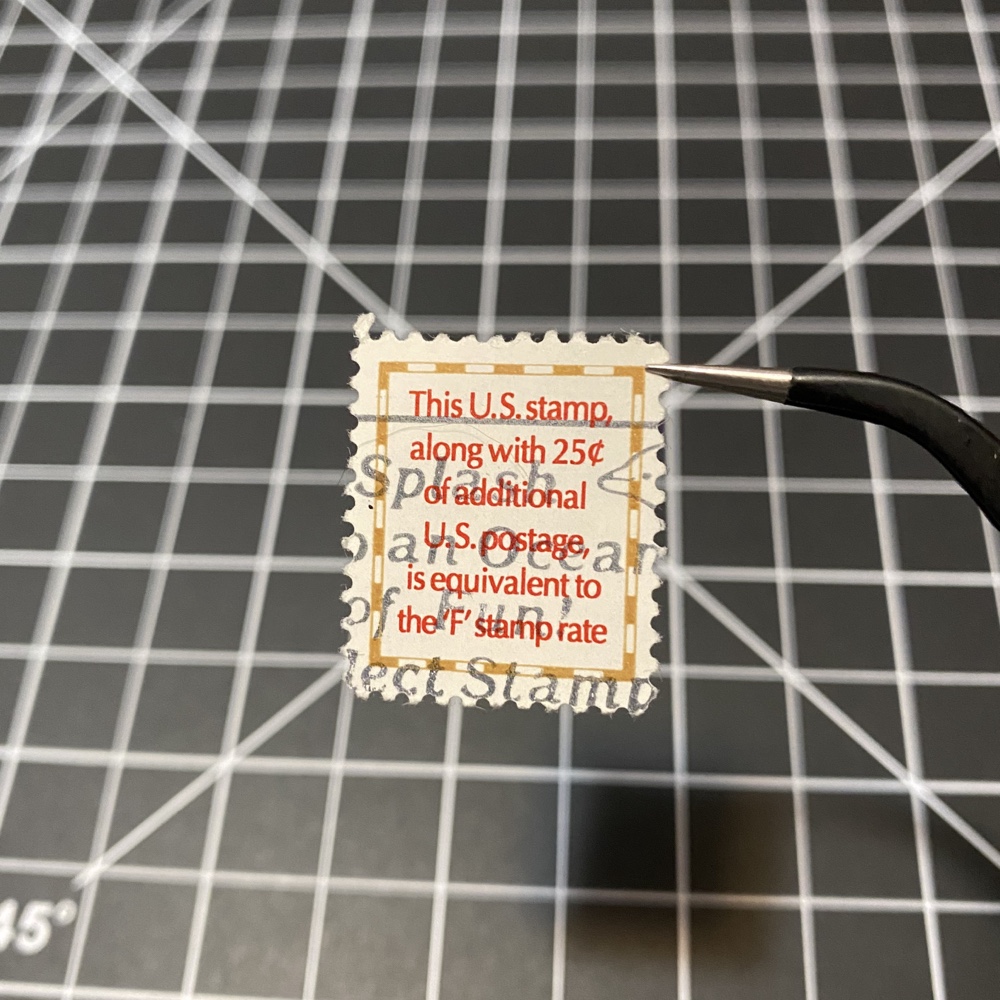
This guy stood out for obvious reasons. So many words and it doesn’t even mention the cost of the stamp itself! It’s a 4c stamp issued in 1991 when postage increase from 21c to 25c. Ugly as hell, but curious (since 4c stamps existed then and still do today).
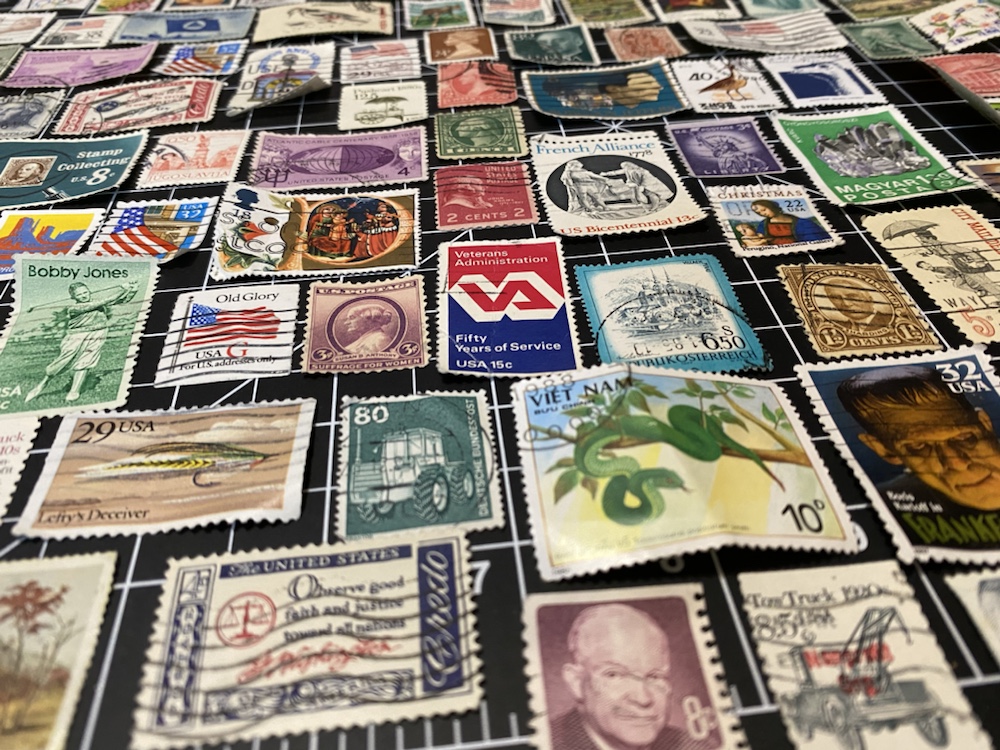
Now I’m sure most of these stamps are common trash to a serious collector, but for someone with no ‘collection’ (such as myself) it’s a good selection and absolutely worth $8 in my opinion. Based on the mixed stamps alone, I was happy with his stamp bag.
But what about the 50 unique dinosaur stamps? Alas this entry has been too long already; let’s save the contents of that enticing yellow dinovelope for next weekend! (And no, I haven’t opened it yet so I’m waiting too!)
See you then 🙂
This is great. I love the Western Sahara bird. Can’t wait for the dinovelope.